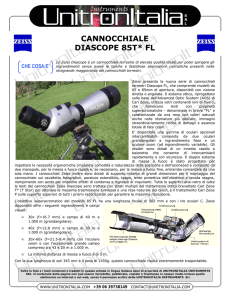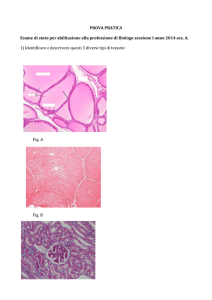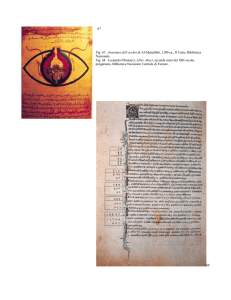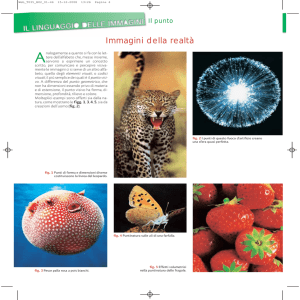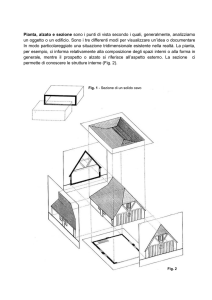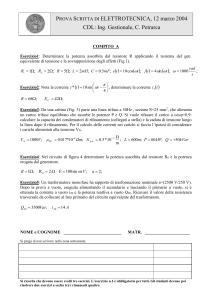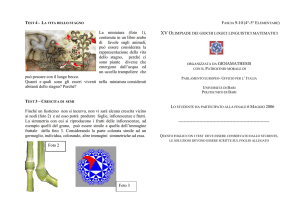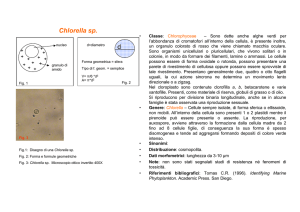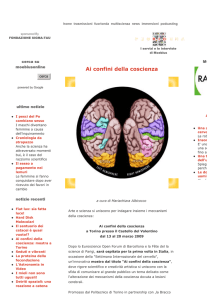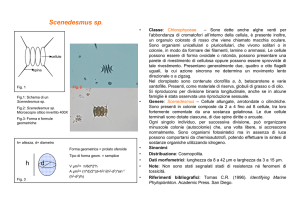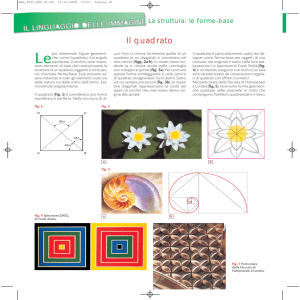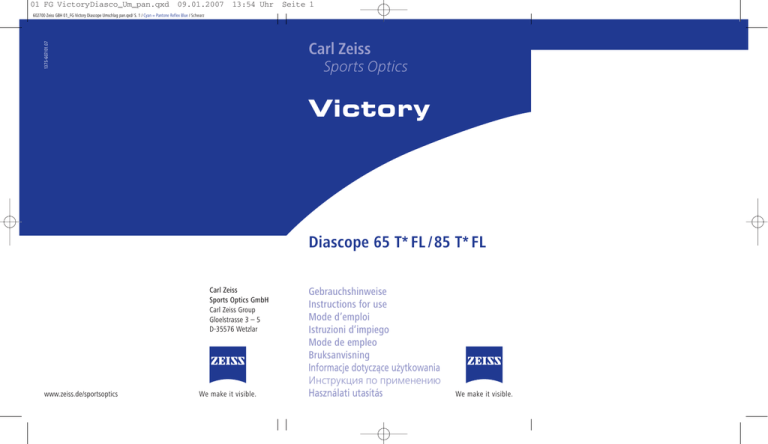
01 FG VictoryDiasco_Um_pan.qxd
09.01.2007
13:54 Uhr
Seite 1
1375-607/01.07
602700 Zeiss GBH 01_FG Victory Diascope Umschlag pan.qxd/ S. 1 / Cyan = Pantone Reflex Blue / Schwarz
Carl Zeiss
Sports Optics
Victory
Diascope 65 T* FL / 85 T* FL
Carl Zeiss
Sports Optics GmbH
Carl Zeiss Group
Gloelstrasse 3 – 5
D-35576 Wetzlar
www.zeiss.de/sportsoptics
We make it visible.
Gebrauchshinweise
Instructions for use
Mode d’emploi
Istruzioni d‘impiego
Mode de empleo
Bruksanvisning
Informacje dotyczące użytkowania
Инструкция по применению
Használati utasítás
We make it visible.
01 FG VictoryDiasco_Um_pan.qxd
09.01.2007
13:54 Uhr
Seite 2
602700 Zeiss GBH 01_FG Victory Diascope Umschlag pan.qxd/ S. 2 / Cyan = Pantone Reflex Blue / Schwarz
Gebrauchshinweise
A
B
C
D
Wir gratulieren Ihnen zu Ihrem neuen, erstklassigen Diascope Spektiv.
Genießen Sie das eindrucksvolle Erlebnis naturgetreuer Bildwiedergabe,
das sich durch beste Brillanz und hohe Farbtreue auszeichnet.
Die Marke Carl Zeiss ist geprägt durch hervorragende optische Leistungen,
präzise Verarbeitung und lange Lebensdauer. Bitte beachten Sie folgende
Gebrauchshinweise, damit Sie Ihr Diascope Spektiv optimal nutzen können
und es Ihnen über viele Jahre ein zuverlässiger Begleiter wird.
Spektiv und Okular werden getrennt voneinander geliefert.
Fig. 1
E
F
Okular-Wechsel
Bei allen Spektivmodellen der Diascope-Serie können Sie zwischen drei
Okularen und somit zwischen mehreren Vergrößerungsvarianten wählen
(siehe Tabelle technische Daten). Mit dem „Vario“-Okular haben Sie eine
variable Vergrößerung von 15 – 45-fach bzw. 20 – 60-fach je nach
Objektivdurchmesser (65 T* FL /85 T* FL).
Zum Einsetzen eines Okulars muss der weiße Punkt am Okular mit dem
roten Punkt am Gehäuse fluchten (Fig. 2). Dann das Okular einschieben
und mit einer kleinen Rechtsdrehung (im Uhrzeigersinn) bis zum Anschlag
drehen.
Zum Herausnehmen des Okulars, eine kleine Linksdrehung (gegen den
Uhrzeigersinn) bis gegen den Anschlag. Mit leichtem Zug das Okular
herausziehen.
Fig. 2
Fig. 3
Schutzdeckel für Okularbajonett und Objektiv
Zum Schutz vor Schmutz und vor Beschädigungen gehören Schutzdeckel
über Okularbajonett und Objektiv mit zum Lieferumfang. Der Schutzdeckel
über dem Okularbajonett kann einfach nach oben abgezogen werden.
Zum Abnehmen des Objektivschutzdeckels werden die einander gegenüberliegenden Tasten zur Mitte gedrückt und der Deckel abgenommen.
Zum Aufsetzen in umgekehrter Reihenfolge vorgehen.
Fig. 4
Fig. 5
Stativmontage
Eine Beobachtung ohne Stativ ist durch die sehr hohe Vergrößerung nicht
empfehlenswert. Mit der Stativhalterung des Zeiss Diascope (Fig. 1/E) sind
die Gewinde 3/8˝ und 1/4˝ (über mitgelieferten Adapter – mit einer Münze
leicht zu wechseln) verwendbar.
Die Stativhalterung an Ihrem Diascope ermöglicht ihnen weiterhin die
Verdrehung des Spektives um die Längsachse in 45°-Schritten.
Notizen
01 FG VictoryDiasco_Um_pan.qxd
09.01.2007
13:54 Uhr
Seite 2
602700 Zeiss GBH 01_FG Victory Diascope Umschlag pan.qxd/ S. 2 / Cyan = Pantone Reflex Blue / Schwarz
Gebrauchshinweise
A
B
C
D
Wir gratulieren Ihnen zu Ihrem neuen, erstklassigen Diascope Spektiv.
Genießen Sie das eindrucksvolle Erlebnis naturgetreuer Bildwiedergabe,
das sich durch beste Brillanz und hohe Farbtreue auszeichnet.
Die Marke Carl Zeiss ist geprägt durch hervorragende optische Leistungen,
präzise Verarbeitung und lange Lebensdauer. Bitte beachten Sie folgende
Gebrauchshinweise, damit Sie Ihr Diascope Spektiv optimal nutzen können
und es Ihnen über viele Jahre ein zuverlässiger Begleiter wird.
Spektiv und Okular werden getrennt voneinander geliefert.
Fig. 1
E
F
Okular-Wechsel
Bei allen Spektivmodellen der Diascope-Serie können Sie zwischen drei
Okularen und somit zwischen mehreren Vergrößerungsvarianten wählen
(siehe Tabelle technische Daten). Mit dem „Vario“-Okular haben Sie eine
variable Vergrößerung von 15 – 45-fach bzw. 20 – 60-fach je nach
Objektivdurchmesser (65 T* FL /85 T* FL).
Zum Einsetzen eines Okulars muss der weiße Punkt am Okular mit dem
roten Punkt am Gehäuse fluchten (Fig. 2). Dann das Okular einschieben
und mit einer kleinen Rechtsdrehung (im Uhrzeigersinn) bis zum Anschlag
drehen.
Zum Herausnehmen des Okulars, eine kleine Linksdrehung (gegen den
Uhrzeigersinn) bis gegen den Anschlag. Mit leichtem Zug das Okular
herausziehen.
Fig. 2
Fig. 3
Schutzdeckel für Okularbajonett und Objektiv
Zum Schutz vor Schmutz und vor Beschädigungen gehören Schutzdeckel
über Okularbajonett und Objektiv mit zum Lieferumfang. Der Schutzdeckel
über dem Okularbajonett kann einfach nach oben abgezogen werden.
Zum Abnehmen des Objektivschutzdeckels werden die einander gegenüberliegenden Tasten zur Mitte gedrückt und der Deckel abgenommen.
Zum Aufsetzen in umgekehrter Reihenfolge vorgehen.
Fig. 4
Fig. 5
Stativmontage
Eine Beobachtung ohne Stativ ist durch die sehr hohe Vergrößerung nicht
empfehlenswert. Mit der Stativhalterung des Zeiss Diascope (Fig. 1/E) sind
die Gewinde 3/8˝ und 1/4˝ (über mitgelieferten Adapter – mit einer Münze
leicht zu wechseln) verwendbar.
Die Stativhalterung an Ihrem Diascope ermöglicht ihnen weiterhin die
Verdrehung des Spektives um die Längsachse in 45°-Schritten.
Notizen
Victory Diascope 65 T* FL / 85 T* FL
Dazu wird die Klemmschraube (Fig. 1/C) an der Stativhalterung gelöst (Linksdrehung) und dann das Spektiv in die gewünschte Richtung verdreht bis eine
Rastung erfolgt. Ist die gewünschte Stellung erreicht, wieder mit der Klemmschraube (Fig. 1/C) feststellen.
Beobachten mit und ohne Brille
Beim Beobachten ohne Brille benutzen Sie das Okular mit ausgezogener
Augenmuschel (Fig. 1). Hierzu wird die Augenmuschel nach oben herausgezogen und mit einer kurzen Drehbewegung nach rechts (im Uhrzeigersinn)
arretiert wie in Fig. 1 dargestellt.
Beim Beobachten mit Brille lösen Sie die Arretierung – kurze Drehung nach
links (gegen den Uhrzeigersinn) – und schieben bitte die Augenmuschel ganz
nach unten.
Hinweis: Im ausgezogenen Zustand kann die Augenmuschel gegen unbeabsichtigtes Einschieben arretiert werden.
Fokussierung
Der Fokussiertrieb ist in zwei Stufen unterteilt. Mit der Grobtriebrolle (Fig. 1/A)
ist eine schnelle Grobeinstellung möglich. Die Feinfokussierung erfolgt über
die Feintriebrolle (Fig. 1/B).
Ausziehbare Gegenlichtblende
Diese Blende (Fig. 1/F) hält störendes Sonnenlicht ab und lässt gleichermaßen keinen groben Schmutz oder Feuchtigkeit (z.B. Regen) zum Objektiv.
Die Peilhilfe (Fig. 1/D) auf der Gegenlichtblende ermöglicht das leichtere
Anvisieren eines Objektes. Dies ist besonders nützlich bei Okularen mit hohen
Vergrößerungen.
Pflege und Wartung
Ein Carl Zeiss Diascope Spektiv bedarf keiner besonderen Pflege.
Grobe Schmutzteilchen (z.B. Sand) auf den Linsen nicht abwischen, sondern
wegblasen oder mit einem Haarpinsel entfernen. Fingerabdrücke können nach
einiger Zeit die Linsenoberflächen angreifen. Anhauchen und mit einem sauberen Optikreinigungstuch/Optikreinigungspapier nachreiben ist die einfachste
Art, Linsenoberflächen zu reinigen.
Gegen den besonders in den Tropen möglichen Pilzbelag auf der Optik hilft
eine trockene Lagerung und stets gute Belüftung der äußeren Linsenflächen.
Achtung
Schauen Sie keinesfalls mit dem Spektiv in die Sonne oder Laserlichtquellen,
dies könnte zu schweren Augenverletzungen führen.
Gebrauchshinweise
Ersatzteile für Victory T* FL Diascope und Okulare
Bajonett-Schutzkappe für Diascope 65 T* FL /85 T* FL
52 80 02 - 0009
Objektiv-Schutzkappe für Diascope 65 T* FL
Objektiv-Schutzkappe für Diascope 85 T* FL
0433-942
0433-940
Abdeckkappe für Okulare 23/30 x und 30/40 x
Abdeckkappe für Vario-Okular
52 80 18 - 0008
52 80 20 - 0008
Bajonett-Abdeckkappe für Okulare
52 80 18 - 0009
Corduratasche für Okulare
1161-740
Zubehör für Victory T* FL Diascope1
Fotoadapter für Spiegelreflexkameras
(Anschluss über T2-Adapter)
52 80 30
Astroadapter zum Anschluss von
astronomischen Okularen an Zeiss Diascope
52 83 84
Astroadapter zum Anschluss von Diascope-Okularen
52 83 85
an astronomische Fernrohre (11/4 Zoll)
Astroadapter zum Anschluss von Diascope-Okularen
52 83 86
an astronomische Fernrohre (2 Zoll)
Victory Diascope 65 T* FL / 85 T* FL
1
Stativ
inkl. Videokopf und Trageband
1206-889
Quick-Camera-Adapter
52 86 10
Bereitschaftstasche für Diascope 65 T* FL Geradeeinblick
Bereitschaftstasche für Diascope 65 T* FL Schrägeinblick
Bereitschaftstasche für Diascope 85 T* FL Geradeeinblick
Bereitschaftstasche für Diascope 85 T* FL Schrägeinblick
1161-763
1161-765
1161-766
1161-767
Tragetasche für Diascope 65 T* FL
Tragetasche für Diascope 85 T* FL
1161-768
1161-769
Neopren-Cover für Diascope 65 T* FL Geradeeinblick
Neopren-Cover für Diascope 65 T* FL Schrägeinblick
Neopren-Cover für Diascope 85 T* FL Geradeeinblick
Neopren-Cover für Diascope 85 T* FL Schrägeinblick
52 91 63
52 91 64
52 91 65
52 91 66
Zubehör ist nicht im Lieferumfang enthalten!
Brennweite (mm)
Filtergewinde objektivseitig
Objektivdurchmesser (mm)
Kürzeste Naheinstellung (m)
Höhe (mm)
Breite (mm)
Länge (mm)
Gewicht (g)
Wasserdicht
nach DIN ISO 9022-8
Stickstofffüllung
Vergrößerung
Brennweite (mm)
Sehfeld auf 1000 m (m)
Austrittspupille (mm)
Durchmesser (mm)
Länge (mm)
Gewicht (g)
Bestellnummer
Diascope 65 T* FL
Geradeeinblick/Schrägeinblick
384
M 72 x 0,75
65
4
105
80
300
1100
Diascope 85 T* FL
Geradeeinblick/Schrägeinblick
502
M 86 x1
85
5
105
97
345
1450
●
●
●
Okular 23 x
Fig. 3
23 x
16,7
52
2,8
48
87
230
52 80 18
Okular 30 x
Fig. 4
30 x
12,8
40
2,1
48
77
230
52 80 19
●
Vario-Okular
Fig. 5
15 – 45 x
25,1 – 8,4
56 – 26
4,3 – 1,4
56
99
330
52 80 20
Okular 30 x
Fig. 3
30 x
16,7
40
2,8
48
87
230
52 80 18
Okular 40 x
Fig. 4
40 x
12,8
30
2,1
48
77
230
52 80 19
Änderungen in Ausführung und Lieferumfang, die der technischen Weiterentwicklung dienen, vorbehalten.
Vario-Okular
Fig. 5
20 – 60 x
25,1 – 8,4
43 – 20
4,3 – 1,4
56
99
330
52 80 20
Gebrauchshinweise
Technische Daten
Victory Diascope 65 T* FL / 85 T* FL
We congratulate you on your outstanding new Diascope spotting scope.
Enjoy the impressive experience of undistorted image reproduction which
is distinguished by perfect brilliance and excellent colour accuracy.
The Carl Zeiss brand is famous for outstanding optical achievements,
precision workmanship and long service life.
Please observe the following instructions for use in order to obtain the
best from your Diascope spotting scope and to ensure that it remains your
constant companion for many years to come.
The spotting scope and the eyepiece are supplied as separate units.
Protective caps for the eyepiece bayonet and the lens
To protect the eyepiece bayonet and the lens against dirt and damage, the
delivery package includes protective caps. You can easily remove the cap on
the eyepiece bayonet by pulling it upward. To remove the lens cap, press the
two buttons opposite each other together. Proceed in the reverse order to
mount the caps.
Changing the eyepiece
You can choose between three eyepieces and thus between several magnification ranges for the spotting scopes of the Diascope line (see the table with technical data). The zoom eyepiece provides you with a variable magnification from
15 x – 45 x or 20 x – 60 x, depending on the lens diameter (65 T* FL /85 T* FL).
When inserting an eyepiece, make sure that the white dot on the eyepiece is
exactly opposite the red dot on the housing (Fig. 2). Insert the eyepiece and
turn it clockwise as far as it will go.
To remove the eyepiece, turn the eyepiece counterclockwise as far as it will
go. Remove the eyepiece by giving it a slight pull.
Mounting the spotting scope on a tripod
In view of the very high magnification, viewing without a tripod is not
advisable. The tripod bracket provided by the Zeiss Diascope (Fig. 1/E) allows
the use of tripods with a 3/8˝ thread. An adapter included in the delivery package can be screwed into this thread to allow the use of 1/4˝ tripods.
The tripod bracket on your Diascope also enables you to turn the spotting
scope about its horizontal axis in steps of 45°. To do this, loosen the locking
screw (Fig. 1/C) on the tripod bracket (turn counterclockwise) and turn the
spotting scope in the direction required until it clicks into the position
required. Secure the spotting scope into position by retightening the locking
screw (Fig. 1/C).
Instructions for use
Viewing with and without glasses
If you do not wear glasses, use the eyepiece with the eyecup extended (Fig. 1):
Pull the eyecup upward and give it a short turn in the clockwise direction,
thus locking it as shown in Fig. 1.
If you wear glasses, unlock the eyecup by giving it a short turn in the counterclockwise direction and push the eyecup down all the way.
Note: When pulled out, the eyecup can be locked to ensure that it cannot be
pushed in inadvertently.
Focusing
Two controls are provided for focusing.
Focusing wheel (Fig. 1/A) allows rapid coarse focusing.
Focusing wheel (Fig. 1/B) is used for fine focusing.
Extendable sunshade
This shade (Fig. 1/F) prevents annoying sunlight from entering the lens and
also protects the lens from coarse dirt and moisture (e.g. rain). The sight
(Fig. 1/D) on the sunshade makes it easier to pinpoint an object; this is particularly beneficial with high-power eyepieces.
Care and maintenance
The Diascope spotting scope from Carl Zeiss needs no special care or
maintenance.
Do not wipe off coarse dirt particles (e.g. sand) from the lenses, but blow
them off or remove them with a soft brush.
Fingerprints on the lens surfaces may affect them in the course of time. The
easiest way to keep the lenses clean is by breathing on them and wiping with
a soft optical cleaning cloth or optical cleaning paper.
To avoid a possible fungal coating which is common in the tropics, store the
optics in a dry place and always ensure good aeration of the lens surface.
Warning
Do not under any circumstances look through the spotting scope at the sun
or laser light sources! Serious eye injury may otherwise result.
Victory Diascope 65 T* FL / 85 T* FL
Spare parts for Victory T* FL Diascope and Eyepieces
Bayonet cap for Diascope 65 T* FL /85 T* FL
52 80 02 - 0009
Lens cap for Diascope 65 T* FL
Lens cap for Diascope 85 T* FL
0433-942
0433-940
Cap for 23/30x and 30/40 x eyepieces
Cap for zoom eyepiece
52 80 18 - 0008
52 80 20 - 0008
Bayonet cap for eyepieces
52 80 18 - 0009
Cordura pouch for eyepieces
1161-740
Accessories for Victory T* FL Diascope1
Camera adapter for SLR cameras
(connection by T2 adapter)
52 80 30
Astro adapter for connecting
astronomical eyepieces to Zeiss Diascope
52 83 84
Astro adapter for connecting Diascope eyepieces
to astronomical telescopes (11/4 in.)
52 83 85
Astro adapter for connecting Diascope eyepieces
to astronomical telescopes (2 in.)
52 83 86
Instructions for use
Tripod
incl. video head and carrying strap
1206-889
Quick camera adapter
52 86 10
Ever ready case for Diascope 65 T* FL
for straight viewing
Ever ready case for Diascope 65 T* FL
for angled viewing
Ever ready case for Diascope 85 T* FL
for straight viewing
Ever ready case for Diascope 85 T* FL
for angled viewing
Carrying case for Diascope 65 T* FL
Carrying case for Diascope 85 T* FL
Neoprene cover for Diascope 65 T* FL
for straight viewing
Neoprene cover for Diascope 65 T* FL
for angled viewing
Neoprene cover for Diascope 85 T* FL
for straight viewing
Neoprene cover for Diascope 85 T* FL
for angled viewing
1
Accessories are not included in the delivery package!
1161-763
1161-765
1161-766
1161-767
1161-768
1161-769
52 91 63
52 91 64
52 91 65
52 91 66
Focal length (mm)
Filter threads on lens side
Objective lens diameter (mm)
Shortest focusing distance (m)
Height (mm)
Width (mm)
Length (mm)
Weight (g)
Waterproof in
acc. with DIN ISO 9022-8
Nitrogen filling
Magnification
Focal length (mm)
Field of view at 1000 m (m)
Exit pupil (mm)
Diameter (mm)
Length (mm)
Weight (g)
Order numbers
Diascope 65 T* FL
Straight viewing/Angled viewing
384
M 72 x 0.75
65
4
105
80
300
1100
Diascope 85 T* FL
Straight viewing/Angled viewing
502
M 86 x1
85
5
105
97
345
1450
●
●
●
●
Eyepiece 23 x Eyepiece 30 x Zoom-Eyepiece Eyepiece 30 x Eyepiece 40 x Zoom-Eyepiece
Fig. 3
Fig. 4
Fig. 5
Fig. 3
Fig. 4
Fig. 5
23 x
30 x
15 – 45 x
30 x
40 x
20 – 60 x
16.7
12.8
25.1 – 8.4
16.7
12.8
25.1 – 8.4
52
40
56 – 26
40
30
43 – 20
2.8
2.1
4.3 – 1.4
2.8
2.1
4.3 – 1.4
48
48
56
48
48
56
87
77
99
87
77
99
230
230
330
230
230
330
52 80 18
52 80 19
52 80 20
52 80 18
52 80 19
52 80 20
Subject to changes in design and scope of delivery as a result of ongoing technical development.
Victory Diascope 65 T* FL / 85 T* FL
Technical data
Mode d’emploi
Nous vous félicitons pour l’achat de votre nouvelle longue-vue Diascope
de première qualité.
Appréciez l’expérience impressionnante d’un rendu d’image respectant
la nature qui se distingue par une brillance incomparable et une haute
fidélité des couleurs.
La marque Carl Zeiss est synonyme de haut de gamme dans le domaine de
l’optique, de finition de qualité et d’une fiabilité exceptionnelle. Veuillez
respecter les instructions d’utilisation ci-jointes afin de pouvoir utiliser votre
longue-vue Diascope de manière optimale et pendant de nombreuses années.
La longue-vue d’observation et son oculaire sont fournis séparément.
Cache d’objectif et couvercle protecteur de la monture à baïonnette de
l’oculaire
Compris dans la fourniture, le cache d’objectif et le couvercle protecteur de la
monture à baïonnette de l’oculaire offrent une bonne protection contre les
saletés et contre tout endommagement. Pour enlever le couvercle protecteur,
il suffit de le tirer vers le haut. Quant au cache d’objectif, on le retire en pressant les deux touches se trouvant en face l’une de l’autre vers le centre. Pour
les remettre en place, procéder dans l’ordre inverse.
Changement d’oculaire
Toutes les longues-vues d’observation de la série Diascope vous permettent de
choisir entre trois types d’oculaires et donc entre plusieurs échelons de grossissement (voir la table des caracteristiques techniques). Quant à l’oculaire
zoom, il vous offre un grossissement variable compris entre 15 et 45 x ou entre
20 et 60 x, selon le diamètre de l’objectif (65 T* FL /85 T* FL).
Pour mettre en place un oculaire, il faut faire coïncider le point blanc qui y est
reporté avec le point rouge du boîtier de la longue-vue (Fig. 2). Enfoncer
ensuite l’oculaire et le tourner à droite (dans le sens horaire) jusqu’en position
de butée. Pour démonter l’oculaire, le tourner à gauche (dans le sens horaire
inverse) jusqu’à la butée, puis l’ôter en tirant.
Montage sur un trépied
Vu le grossissement très élevé, il n’est pas conseillé d’utiliser la longue-vue sans
un trépied. Le raccord de trépied des modèles Diascope (Fig. 1/E) est utilisable
en présence de filetages de 3/8˝ et de 1/4˝ (par l’intermédiaire d’un adaptateur
fourni, facilement échangeable à l’aide d’une pièce de monnaie). II permet également de tourner la longue-vue montée autour de son axe longitudinal par pas
de 45°. II suffit pour cela de desserrer la vis de blocage (Fig. 1/C) au niveau du
Victory Diascope 65 T* FL / 85 T* FL
raccord (la tourner à gauche) et de tourner ensuite la longue-vue dans la direction désirée jusqu’à ce qu’elle s’enclenche dans la position qui convient. Une
fois le positionnement terminé, resserrer la vis de blocage (Fig. 1/C).
Observation avec ou sans des lunettes
Utilisez l’oculaire à bonnette relevée lorsque vous observez sans lunettes
(Fig. 1). Pour ce faire, tirer la bonnette vers le haut et la bloquer par une
rotation à droite (dans le sens horaire), comme représenté sur la Fig. 1.
Lors d’une observation avec des lunettes, tourner la bonnette à gauche (dans
le sens horaire inverse) pour la débloquer et l’abaisser complètement.
Nota : La bonnette peut être bloquée en position tirée pour prévenir tout
abaissement inopiné.
Mise au point
La longue-vue est équipé d’un système de mise au point double. La molette de
mise au point approchée (Fig. 1/A) permet une première mise au point rapide.
La mise au point de précision s’effectue à l’aide de la molette de mise au point
fine (Fig. 1/B).
Pare-soleil télescopique
Ce pare-soleil (Fig. 1/F) prévient l’incidence de rayonnement solaire gênant et
empêche les grosses particules et l’humidité (gouttes de pluie, par exemple) de
se déposer sur l’objectif. Le repère du pare-soleil (Fig. 1/D) permet de pointer la
longue-vue en direction de l’objet à observer. Il s’avère ainsi particulièrement
utile en présence d’oculaires d’un grossissement élevé.
Nettoyage et entretien
Les longues-vues Diascope de Carl Zeiss ne nécessitent aucun soin particulier.
Ne pas essuyer les grosses particules de saleté (des grains de sable, par exemple)
déposées sur les lentilles, mais les épousseter à l’aide d’un pinceau fin ou les
chasser en soufflant dessus. Les empreintes laissées par les doigts peuvent finir
par altérer les surfaces des lentilles au bout d’un certain temps. Le moyen le plus
simple de les enlever consiste à les embuer par un souffle d’air expiré puis à les
frotter avec un chiffon ou un papier de nettoyage optique propre.
Pour prévenir la formation de moisissures qui est susceptible de se produire dans
les pays tropicaux notamment, il convient de garder la lunette de visée toujours
au sec et de veiller à une bonne aération des surfaces de lentilles extérieures.
Attention
Ne jamais regarder le soleil ou des sources de lumière laser avec une longuevue Diascope sous peine d’encourir de graves atteintes oculaires.
Mode d’emploi
Pièces de rechange pour Victory T* FL Diascope et oculaires
Capuchon de protection de baïonnette
pour Diascope 65 T* FL /85 T* FL
52 80 02 - 0009
Cache d’objectif pour Diascope 65 T* FL
Cache d’objectif pour Diascope 85 T* FL
0433-942
0433-940
Capuchon protecteur d’oculaires 23/30 x et 30/40 x 52 80 18 - 0008
Capuchon protecteur de l’oculaire Vario
52 80 20 - 0008
Capuchon de protection de baïonnette
pour oculaires
52 80 18 - 0009
Sacoche en Cordura pour oculaires
1161-740
Accessoires pour Victory T* FL Diascope1
Adaptateur photo pour boîtiers reflex
(montage moyennant une bague T2)
52 80 30
Adaptateur Astro pour monter des oculaires
astronomiques sur des longues-vues
Diascope de Carl Zeiss
52 83 84
Adaptateur Astro pour monter les oculaires Diascope
52 83 85
sur des lunettes astronomiques (11/4 de pouce)
Adaptateur Astro pour monter les oculaires Diascope
52 83 86
sur des lunettes astronomiques (2 pouces)
Victory Diascope 65 T* FL / 85 T* FL
Trépied
avec tête vidéo et bretelle de transport
1206-889
Adaptateur photo rapide
52 86 10
Sacoche «toujours-prêt»
pour Diascope 65 T* FL à visée droite
Sacoche «toujours-prêt»
pour Diascope 65 T* FLL à visée incliné
Sacoche «toujours-prêt»
pour Diascope 85 T* FL à visée droite
Sacoche «toujours-prêt»
pour Diascope 85 T* FL à visée incliné
Sacoche de port pour Diascope 65 T* FL
Sacoche de port pour Diascope 85 T* FL
Revêtement de néoprène
pour Diascope 65 T* FL à visée droite
Revêtement de néoprène
pour Diascope 65 T* FL à visée inclinée
Revêtement de néoprène
pour Diascope 85 T* FL à visée droite
Revêtement de néoprène
pour Diascope 85 T* FL à visée inclinée
1
Les accessoires ne sont pas compris dans la fourniture !
1161-763
1161-765
1161-766
1161-767
1161-768
1161-769
52 91 63
52 91 64
52 91 65
52 91 66
Focale (mm)
Filetage de filtre côte objectif
Diamètre de l’objectif (mm)
Distance d’observation min. (m)
Hauteur (mm)
Largeur (mm)
Longueur (mm)
Poids (g)
Etanches à l’eau conformément
à la norme DIN ISO 9022-8
Remplissage à l’azote
Diascope 65 T* FL
Observation directe/oblique
384
M 72 x 0,75
65
4
105
80
300
1100
Diascope 85 T* FL
Observation directe/oblique
502
M 86 x1
85
5
105
97
345
1450
●
●
●
●
Oculaire 23 x Oculaire 30 x Zoom-Oculaire Oculaire 30 x Oculaire 40 x Zoom-Oculaire
Fig. 3
Fig. 4
Fig. 5
Fig. 3
Fig. 4
Fig. 5
Grossissement
23 x
30 x
15 – 45 x
30 x
40 x
20 – 60 x
Focale (mm)
16,7
12,8
25,1 – 8,4
16,7
12,8
25,1 – 8,4
Champ de vision à 1000 m (m)
52
40
56 – 26
40
30
43 – 20
Pupille de sortie (mm)
2,8
2,1
4,3 – 1,4
2,8
2,1
4,3 – 1,4
Diamètre (mm)
48
48
56
48
48
56
Longueur (mm)
87
77
99
87
77
99
Poids (g)
230
230
330
230
230
330
N° de commande
52 80 18
52 80 19
52 80 20
52 80 18
52 80 19
52 80 20
Sous réserve de modifications techniques de l’appareil et des éléments constitutifs de l’équipement livré.
Mode d’emploi
Caractéristiques
techniques
Victory Diascope 65 T* FL / 85 T* FL
Complimenti per l’acquisto del Vostro nuovo cannocchiale Diascope di
eccellente qualità.
Godetevi la straordinaria esperienza di una riproduzione d’immagine
fedele, che si contraddistingue per l’eccezionale brillantezza e l’elevata
naturalezza dei colori.
Il marchio Carl Zeiss è sinonimo di prestazioni ottiche eccellenti, lavorazioni di precisione e lunga durata. Vi consigliamo di seguire scrupolosamente
le seguenti istruzioni d’uso in modo da poter utilizzare al meglio lo cannocchiale Diascope, che diventerà un compagno affidabile per molti anni.
Il cannocchiale e l’oculare vengono forniti in confezioni separate.
Coperchio di protezione per la baionetta dell’oculare e per l’obiettivo
II coperchio di protezione per la baionetta dell’oculare e per l’obiettivo sono forniti sin dall’inizio in modo che essi siano protetti dalla polvere e da danneggiamenti. II coperchio di protezione sulla baionetta dell’oculare può essere facilmente rimosso tirando verso l’alto.
Per togliere invece quello dell’obiettivo si devono premere verso il centro i tasti
posti uno di fronte all’altro: fatto questo è possibile rimuoverlo. Per riposizionarlo
bisogna eseguire tale procedura al contrario.
Cambio dell’oculare
In tutti i tipi di cannocchiali della serie Diascope è possibile scegliere tra tre
oculari e di conseguenza tra diverse variazioni di ingrandimento (vedi tabella dei
dati tecnici). Con l’oculare «Vario» si ha un ingrandimento variabile a partire da
15 – 45 x e/o 20 – 60 x in base al diametro dell’obiettivo (65 T* FL /85 T* FL).
Per inserire un oculare il punto bianco su di esso deve allinearsi con il punto
rosso sul corpo dello strumento (Fig. 2). Successivamente l’oculare deve essere spinto dentro e quindi girando brevemente verso destra (in direzione oraria), lo si deve posizionare fino al punto di arresto. Per togliere l’oculare e
sufficiente girare brevemente verso sinistra (in senso antiorario) fino al punto
di arresto. Togliere l’oculare tirando leggermente.
Montaggio dello stativo
Si sconsiglia di effettuare una osservazione senza lo stativo a causa dell’ingrandimento molto elevato. Con il supporto dello stativo di Zeiss Diascope (Fig. 1/E)
si possono utilizzare le filettature 3/8˝ e 1/4˝ (questo per mezzo di un adattatore
compreso nella fornitura – con una monetina può essere facilmente sostituito).
II supporto dello stativo al proprio Diascope consente inoltre la rotazione del
cannocchiale sull’asse Iongitudinale in passi da 45°. A tale scopo la vite di fissaggio sul supporto dello stativo (Fig. 1/C) viene allentata (girare a sinistra),
Istruzioni d’impiego
quindi il cannocchiale viene ruotato nella direzione desiderata fino all’arresto.
A questo punto, se si è ottenuta la posizione desiderata, si avvita di nuovo la
vite di arresto (Fig. 1/C).
Osservazione con e senza occhiali
Qualora si effettuino delle osservazioni senza occhiali, l’oculare deve essere
impiegato con le conchiglie oculari estratte (Fig. 1). Per fare questo le conchiglie oculari devono essere tirate verso l’alto e quindi bloccate con una leggera
rotazione verso destra (in senso orario), come raffigurato nella Fig. 1.
Durante l’osservazione con gli occhiali si deve togliere l’arresto – breve rotazione verso sinistra (in senso antiorario), poi le conchiglie oculari devono essere spinte completamente verso il basso.
Informazione: Quando le conchiglie oculari si trovano nella posizione di
estrazione, esse possono essere bloccate per evitare un inserimento non voluto verso il basso.
Messa a fuoco
II sistema di focalizzazione è suddiviso in due fasi. Tramite il rullo di avanzamento veloce (Fig. 1/A) è possibile effettuare una messa a fuoco veloce e
grossolana. La messa a fuoco fine viene ottenuta tramite il rullo di avanzamento lento (Fig. 1/B).
Schermo paraluce estraibile
Questo schermo (Fig. 1/F) impedisce sia il passaggio della luce del sole,
che può disturbare la visione, ed inoltre nella stessa misura impedisce a della
sporcizia grossolana o alle umidità (ad esempio pioggia), di raggiungere
l’obiettivo. II rilevatore posto sullo schermo paraluce (Fig. 1/D), consente un
facile puntamento di un oggetto: questo risulta particolarmente utile nel caso
si impieghino oculari ad ingrandimento elevato.
Pulizia e manutenzione
Un cannocchiale Carl Zeiss Diascope non richiede cure particolari. Soffiare via
oppure eliminare con un pennello eventuali particelle grossolane di sporco
presenti sulle lenti, come ad esempio granelli di sabbia. Con il tempo le impronte possono corrodere la superficie delle lenti. Il modo più semplice di
pulire la superficie delle lenti consiste nel soffiare via lo sporco e poi strofinare
con una velina pulita. Per prevenire eventuali formazioni di funghi sull’ottica
possibili soprattutto ai tropici, si raccomanda una conservazione in ambiente
asciutto ed una buona ventilazione delle superfici esterne delle lenti.
Attenzione
Non guardare con il cannocchiale in direzione del sole o di fonti di luce
laser! Pericolo di gravi lesioni agli occhi.
Victory Diascope 65 T* FL / 85 T* FL
Pezzi di ricambio per Diascope Victory T* FL e oculari
Tappo di protezione a baionetta
per Diascope 65 T* FL /85 T* FL
52 80 02 - 0009
Tappo di protezione obiettivo per Diascope 65 T* FL
Tappo di protezione obiettivo per Diascope 85 T* FL
0433-942
0433-940
Tappo di copertura per oculari 23/30 x e 30/40 x
Tappo di copertura per oculare Vario
52 80 18 - 0008
52 80 20 - 0008
Tappo di copertura a baionetta per oculari
52 80 18 - 0009
Borsa in cordura per oculari
1161-740
Accessori per Diascope Victory T* FL1
Fotoadattatore per macchine fotografiche reflex
(attacco tramite adattatore T2)
52 80 30
Astroadattatore per attacco di oculari
astronomici a Zeiss Diascope
52 83 84
Astroadattatore per attacco di oculari Diascope
a cannocchiali astronomici (11/4˝)
52 83 85
Astroadattatore per attacco di oculari Diascope
a cannocchiali astronomici (2˝)
52 83 86
Istruzioni d’impiego
Stativo
testa video e tracolla comprese
1206-889
Adattatore rapido per macchina fotografica
52 86 10
Custodia di trasporto per Diascope 65 T* FL
oculare diritto
Custodia di trasporto per Diascope 65 T* FL
oculare inclinato
Custodia di trasporto per Diascope 85 T* FL
oculare diritto
Custodia di trasporto per Diascope 85 T* FL
oculare inclinato
Borsa di trasporto per Diascope 65 T* FL
Borsa di trasporto per Diascope 85 T* FL
Coperchio in neoprene per Diascope 65 T* FL
oculare diritto
Coperchio in neoprene per Diascope 65 T* FL
oculare inclinato
Coperchio in neoprene per Diascope 85 T* FL
oculare diritto
Coperchio in neoprene per Diascope 85 T* FL
oculare inclinato
1
Accessori non compresi nella dotazione!
1161-763
1161-765
1161-766
1161-767
1161-768
1161-769
52 91 63
52 91 64
52 91 65
52 91 66
Distanza focale (mm)
Filettatura del filtro
da lato obiettivo
Diametro obiettivo (mm)
Primo piano minimo (m)
Altezza (mm)
Larghezza (mm)
Lunghezza (mm)
Peso (g)
Impermeabile secondo
norma DIN ISO 9022-8
Bustina azoto
Diascope 65 T* FL
Oculare diritto/Oculare inclinato
384
Diascope 85 T* FL
Oculare diritto/Oculare inclinato
502
M 72 x 0,75
M 86 x1
65
4
105
80
300
1100
85
5
105
97
345
1450
●
●
●
●
Oculare 23 x Oculare 30 x Oculare Vario Oculare 30 x Oculare 40 x Oculare Vario
Fig. 3
Fig. 4
Fig. 5
Fig. 3
Fig. 4
Fig. 5
Ingrandimento
23 x
30 x
15 – 45 x
30 x
40 x
20 – 60 x
Distanza focale (mm)
16,7
12,8
25,1 – 8,4
16,7
12,8
25,1 – 8,4
Campo visivo su 1000 m (m)
52
40
56 – 26
40
30
43 – 20
Pupilla uscita (mm)
2,8
2,1
4,3 – 1,4
2,8
2,1
4,3 – 1,4
Diametro (mm)
48
48
56
48
48
56
Lunghezza (mm)
87
77
99
87
77
99
Peso (g)
230
230
330
230
230
330
Cod. ordine
52 80 18
52 80 19
52 80 20
52 80 18
52 80 19
52 80 20
Con riserva di eventuali modifiche all’esecuzione e fornitura necessarie per l’ulteriore sviluppo tecnico del prodotto.
Victory Diascope 65 T* FL / 85 T* FL
Dati tecnici
Mode de empleo
Le damos las gracias por la compra de su nuevo telescopio terrestre
Diascope de primera categoría.
Disfrute de la sensación inolvidable de la fidelidad de una imagen real que
destaca por la excelente brillantez y la alta fidelidad cromática.
La marca Carl Zeiss se caracteriza por sus extraordinarias prestaciones ópticas, un acabado de alta precisión y su larga duración. Le rogamos observar
las siguientes indicaciones de empleo para poder sacar el máximo provecho
a su telescopio terrestre Diascope para que le sirva de fiel acompañante
durante muchos años.
El telescopio y el ocular se entregan por separado.
Capuchones protectores para el objetivo y la bayoneta del ocular
Para proteger el catalejo contra suciedad y daños, los capuchones protectores
para el objetivo y la bayoneta del ocular forman parte del volumen de suministro. El capuchón de la bayoneta del ocular simplemente se extraerá hacia
arriba. Para retirar el capuchón del objetivo se apretarán los dos marcajes
opuestos uno respecto al otro hacia el centro, para soltarlo luego. Para colocar los capuchones, proceda en el orden inverso.
Cambio del ocular
En todos los modelos de telescopios de la serie Diascope podrá elegir entre
tres oculares y por lo tanto entre varias variantes de aumento (ver la tabla de
datos técnicos). El ocular «Vario» le proporcionará un aumento variable de 15 x
a 45 x o 20 x a 60 x en función del diámetro del objetivo (65 T* FL /85 T* FL).
Al colocar el ocular, el punto blanco del ocular debe coincidir con el punto
rojo de la carcasa (Fig. 2). Insertar luego el ocular y girarlo ligeramente a la
derecha (en el sentido de las agujas del reloj) hasta el tope.
Para extraer el ocular, girarlo a la izquierda (contra el sentido de las agujas
del reloj) hasta el tope. Tirar ligeramente el ocular para sacarlo.
Montaje en el estativo
La observación sin estativo no es recomendable debido al aumento muy grande. Con el soporte de estativo del Diascope Zeiss (Fig. 1/E) son empleables
las roscar 3/8˝ y 1/4˝ (mediante el adaptador que forma parte del suministro y
que se cambia fácilmente con una moneda). El soporte del estativo de su
Diascope le permite girar adicionalmente el telescopio alrededor del eje longitudinal en pasos de 45°. Para ello se suelta el tornillo de apriete (Fig. 1/C)
del soporte del estativo (giro a la izquierda), girando a continuación el tele-
Victory Diascope 65 T* FL / 85 T* FL
scopio en el sentido deseado hasta que se enclave. Al haber alcanzado la
posición deseada, apretar de nuevo el tornillo (Fig. 1/C).
Observación con y sin gafas
Al observar sin gafas, rogamos emplear el catalejo con la anteojera extraída
(Fig. 1). Para ello, la anteojera se saca hacia arriba, bloqueándola con un
pequeño movimiento giratorio a la derecha (en el sentido de las agujas del
reloj), tal como se representa en la Fig. 1.
Al observar con gafas, haga el favor de desbloquear la anteojera con un
pequeño giro a la izquierda (contra el sentido de las agujas del reloj), introduciendo la anteojera hasta el fondo.
Nota: Estando extraída, es posible bloquear la anteojera está bloqueada para
evitar que se introduzca involuntariamente.
Enfoque
El mando de enfoque se compone de dos etapas. Con el rodillo tosco (Fig. 1/A)
se realiza el ajuste tosco rápido. El enfoque fino se realiza por medio del rodillo
fino (Fig. 1/B).
Quitasol extraible
Este quitasol (Fig. 1/F) evita que penetre la molesta luz solar al mismo tiempo
que no deja pasar al objetivo partículas gruesas de suciedad o humedad (p.ej.
lluvia). El marcaje de orientación (Fig. 1/D) en el quitasol permite apuntar
con más facilidad a un objeto. Esto es muy útil en caso de aumentos grandes.
Cuidado y mantenimiento
Su telescopio terrestre Diascope de Carl Zeiss no requieren ningún cuidado
especial.
Las partículas de suciedad gruesas (p.ej. arena) en las lentes no se frotarán,
sino se soplarán con una perilla o se eliminarán con un pincel.
Tras cierto tiempo, las huellas digitales podrán atacar las superficies de las
lentes. Contra el ataque de la óptica por hongos, que podría darse especialmente en las regiones trópicas, sirve guardar el visor en un lugar seco, ventilando siempre bien las superficies externas de las lentes.
Atención
Nunca mire al sol o fuentes de láser a través del telescopio, ya que podrá
contraer daños oculares serios.
Mode de empleo
Repuestos para Victory T* FL Diascope y oculares
Capuchón protector para bayoneta
del Diascope 65 T* FL /85 T* FL
52 80 02 - 0009
Capuchón protector del objetivo del Diascope 65 T* FL 0433-942
Capuchón protector del objetivo del Diascope 85 T* FL 0433-940
Capuchón para los oculares 23/30 x y 30/40 x
Capuchón para ocular de zoom
52 80 18 - 0008
52 80 20 - 0008
Capuchón para la bayoneta de oculares
52 80 18 - 0009
Estuche de cordura para oculares
1161-740
Accesorios para Victory T* FL Diascope1
Fotoadaptador para cámaras réflex
(montaje mediante adaptador T2)
52 80 30
Astroadaptador para el montaje de oculares
astronómicos a Zeiss Diascope
52 83 84
Astroadaptador para el montaje de oculares
52 83 85
Diascope a telescopios astronómicos (11/4 pulgada)
Astroadaptador para el montaje de oculares
Diascope a telescopios astronómicos (2 pulgadas)
52 83 86
Victory Diascope 65 T* FL / 85 T* FL
Tripié
incl. cabezal de vídeo y correa
1206-889
Adaptador Quick-Camera
52 86 10
Estuche ajustado para Diascope 65 T* FL
con ocular recto
Estuche ajustado para Diascope 65 T* FL
con ocular oblicuo
Estuche ajustado para Diascope 85 T* FL
con ocular recto
Estuche ajustado para Diascope 85 T* FL
con ocular oblicuo
Funda de transporte para Diascope 65 T* FL
Funda de transporte para Diascope 85 T* FL
Estuche ajustado de neopreno
para Diascope 65 T* FL con ocular recto
Estuche ajustado de neopreno
para Diascope 65 T* FL con ocular oblicuo
Estuche ajustado de neopreno
para Diascope 85 T* FL con ocular recto
Estuche ajustado de neopreno
para Diascope 85 T* FL con ocular oblicuo
1
1161-763
1161-765
1161-766
1161-767
1161-768
1161-769
52 91 63
52 91 64
52 91 65
52 91 66
Los accesorios no forman parte del volumen de suministro.
Distancia focal (mm)
Rosca del filtro del lado objetivo
Diámetro del objetivo (mm)
Distancia de enfoque mínima (m)
Altura (mm)
Anchura (mm)
Longitud (mm)
Peso (g)
Herméticos
según DIN ISO 9022-8
Relleno de nitrógeno
Diascope 65 T* FL
Ocular recto/Ocular oblicuo
384
M 72 x 0,75
65
4
105
80
300
1100
Diascope 85 T* FL
Ocular recto/Ocular oblicuo
502
M 86 x1
85
5
105
97
345
1450
●
●
Oculare 23 x
Fig. 3
Aumento
23 x
Distancia focal (mm)
16,7
Campo visual a 1000 m (m)
52
Diám. de la pupila de salida (mm)
2,8
Diámetro (mm)
48
Longitud (mm)
87
Peso (g)
230
No. de pedido
52 80 18
●
Oculare 30 x Oculare Vario Oculare 30 x
Fig. 4
Fig. 5
Fig. 3
30 x
15 – 45 x
30 x
12,8
25,1 – 8,4
16,7
40
56 – 26
40
2,1
4,3 – 1,4
2,8
48
56
48
77
99
87
230
330
230
52 80 19
52 80 20
52 80 18
●
Oculare 40 x Oculare Vario
Fig. 4
Fig. 5
40 x
20 – 60 x
12,8
25,1 – 8,4
30
43 – 20
2,1
4,3 – 1,4
48
56
77
99
230
330
52 80 19
52 80 20
Nos reservamos el derecho a modificaciones técnicas y a cambios de los componentes que constituyen el suministro.
Mode de empleo
Datos técnicos
Victory Diascope 65 T* FL / 85 T* FL
Grattis till din nya, förstklassiga Diascope tubkikare!
Upplev en naturtrogen bildåtergivning som utmärker sig genom knivskarp
briljans och högsta färgåtergivning.
Märket Carl Zeiss kännetecknas av högklassig optik, precis bearbetning
och lång livstid. För att du ska kunna använda din Diascope tubkikare
optimalt och för att garantera att den blir din trogna följeslagare under
många år, ber vi dig att läsa igenom följande bruksanvisning.
Tubkikare och okular levereras åtskilda från varandra.
Skyddslock för okularbajonett och objektiv
För skydd mot smuts och skador medföljer ett skyddslock för okularbajonett
och objektiv vid leverans. Skyddslocket på okularbajonetten kan enkelt tas
bort genom att dras uppåt. För att ta bort objektivskyddet trycker man de rakt
mot varandra liggande knapparna mot mitten, och locket tas av. Påsättningen
utförs i omvänd ordning.
Byte av okular
På alla kikartyperna i Diascope-serien kan man byta mellan tre okular och
på så sätt välja mellan olika förstoringsgrader (se tabell tekniska data).
Med ”Vario”-okularet har man en förstoringsgrad på mellan 15 – 45 ggr
resp. 20 – 60 ggr beroende på objektivdiameter (65 T* FL /85 T* FL).
Vid isättning av ett okular måste den vita punkten på okularet ligga mitt för
den röda punkten på huset (Fig. 2). Skjut därefter in okularet och vrid åt höger
till stoppet (medurs). För att ta bort okularet, vrid det åt vänster (moturs) till
stoppet. Dra därefter ut okularet lätt.
Montering på stativ
En observation utan stativ rekommenderas inte på grund av den starka förstoringsgraden. Med stativhållaren på Zeiss Diascope (Fig. 1/E) kan gängorna
3/8˝ och 1/4˝ användas (med medföljande adapter – kan enkelt bytas med hjälp
av ett mynt). Stativhållaren på ert Diascope gör att ni fortfarande kan vrida
kikaren runt längdaxeln i steg om 45°. För att göra detta lossas låsskruven
(Fig. 1/C) på stativhållaren (vrid åt vänster) och kikaren vrids i önskad riktning
tills den hakar in. När det önskade läget uppnåtts låser man åter med låsskruven (Fig. 1/C).
Bruksanvisning
Användning med och utan glasögon
Vid användning utan glasögon används okularet med utdragen ögonmussla
(Fig. 1). För detta dras ögonmusslan ut uppåt och låses genom att vridas kort
åt höger (medurs) enligt beskrivning i Fig. 1.
Vid användning med glasögon lossas låset genom en kort vridning åt vänster
(moturs). Därefter trycks ögonmusslan ner helt.
Observa: I utdraget tillstånd kan ögonmusslan säkras mot oavsiktlig inskjutning.
Fokusering
Fokuseringen är uppdelad i två steg. Med grovringen (Fig. 1/A) är en snabb
grovinställning möjlig. Finfokuseringen sker med finringen (Fig. 1/B).
Utdragbart motljusskydd
Detta skydd (Fig. 1/F) skyddar mot störande solljus och samtidigt mot smuts
och fukt (t.ex. regn) på objektivet. Sökaren (Fig. 1/D) på motljusskyddet underlättar uppsökningen av ett objekt, vilket särskilt är till nytta vid stark förstoring.
Service och skötsel
En Diascope-tubkikare från Carl Zeiss kräver ingen speciell skötsel. Grov smuts
(t.ex. sand) på linserna bör inte torkas av utan tas bort genom att blåsa bort
smutsen eller genom att använda en pensel. Efter en tids användning kan
fingeravtryck ge upphov till skador på linsytan. Det lättaste sättet att rengöra
linsytor är att andas på dem och putsa dem med en rengöringsduk eller ett
rengöringspapper för optik.
Problem med svampbeläggning på linselementen, som framför allt uppstår i
tropikerna, avhjälps genom att förvara kikaren torrt samt att regelbundet lufta
de yttre linsytorna.
Obs
Titta aldrig direkt mot solen eller mot laserljuskällor genom tubkikaren!
Detta kan leda till svåra ögonskador.
Victory Diascope 65 T* FL / 85 T* FL
Reservdelar till Victory T* FL Diascope och okular
Bajonett-skyddslock till Diascope 65 T* FL /85 T* FL
52 80 02 - 0009
Objektiv-skyddslock till Diascope 65 T* FL
Objektiv-skyddslock till Diascope 85 T* FL
0433-942
0433-940
Lock till okular 23/30 x och 30/40 x
Lock till Vario-okular
52 80 18 - 0008
52 80 20 - 0008
Bajonett-lock till okular
52 80 18 - 0009
Corduraväska till okular
1161-740
Tillbehör till Victory T* FL Diascope1
Fotoadapter till spegelreflexkameror
(ansluts via T2-adapter)
52 80 30
Astroadapter för anslutning
av astronomiska okular på Zeiss Diascope
52 83 84
Astroadapter för anslutning av Diascope-okular
på astronomiska kikare (11/4 tum)
52 83 85
Astroadapter för anslutning av Diascope-okular
på astronomiska kikare (2 tum)
52 83 86
Bruksanvisning
Stativ
inkl. videohuvud och bärrem
1206-889
Quick Camera-adapter
52 86 10
Väska till Diascope 65 T* FL
med rak genomsikt
Väska till Diascope 65 T* FL
med vinklad genomsikt
Väska till Diascope 85 T* FL
med rak genomsikt
Väska till Diascope 85 T* FL
med vinklad genomsikt
Bärväska till Diascope 65 T* FL
Bärväska till Diascope 85 T* FL
Neoprenfodral för Diascope 65 T* FL
med rak genomsikt
Neoprenfodral för Diascope 65 T* FL
med vinklad genomsikt
Neoprenfodral för Diascope 85 T* FL
med rak genomsikt
Neoprenfodral för Diascope 85 T* FL
med vinklad genomsikt
1
Tillbehör medföljer inte vid köp!
1161-763
1161-765
1161-766
1161-767
1161-768
1161-769
52 91 63
52 91 64
52 91 65
52 91 66
Brännvidd (mm)
Filtergänga objektivsida
Objektivdiameter (mm)
Närgräns (m)
Höjd (mm)
Bredd (mm)
Längd (mm)
Vikt (g)
Vattentät
enligt DIN ISO 9022-8
Kvävgasfylld
Förstoring
Brännvidd (mm)
Synfält vid 1000 m (m)
Utgångspupill (mm)
Diameter (mm)
Längd (mm)
Vikt (g)
Bestölln.-nr.
Diascope 65 T* FL
rak genomsikt/vinklad genomsikt
384
M 72 x 0,75
65
4
105
80
300
1100
Diascope 85 T* FL
rak genomsikt/vinklad genomsikt
502
M 86 x1
85
5
105
97
345
1450
●
●
●
Okular 23 x
Fig. 3
23 x
16,7
52
2,8
48
87
230
52 80 18
Okular 30 x
Fig. 4
30 x
12,8
40
2,1
48
77
230
52 80 19
●
Vario-Okular
Fig. 5
15 – 45 x
25,1 – 8,4
56 – 26
4,3 – 1,4
56
99
330
52 80 20
Okular 30 x
Fig. 3
30 x
16,7
40
2,8
48
87
230
52 80 18
Okular 40 x
Fig. 4
40 x
12,8
30
2,1
48
77
230
52 80 19
Tillverkaren förbehåller sig ändringar i utförande och leveransomfång som tjänar den tekniska vidareutvecklingen.
Vario-Okular
Fig. 5
20 – 60 x
25,1 – 8,4
43 – 20
4,3 – 1,4
56
99
330
52 80 20
Victory Diascope 65 T* FL / 85 T* FL
Tekniska data
Informacje dotyczące użytkowania
Gratulujemy zakupu nowej, najwyższej jakości lunety Diascope.
Ciesz się imponującym, naturalnym odwzorowaniem obrazów, które
odznacza się najwyższą soczystością i wiernością kolorów.
Marka Carl Zeiss to doskonałe efekty optyczne, precyzja wykonania
i długa żywotność. Przestrzegaj poniższych informacji dotyczących
użytkowania – dzięki nim optymalnie wykorzystasz funkcje swojej
lunety Diascope i stanie się ona Twoim niezawodnym towarzyszem
na długie lata.
Luneta i okular są dostarczane oddzielnie.
Pokrywa ochronna zamka bagnetowego okularu i obiektywu
Do zakresu dostawy lunety należą pokrywy zamka bagnetowego
okularu i obiektywu, których zadaniem jest ochrona tych elementów
przed brudem i uszkodzeniem. Pokrywę zamka bagnetowego okularu można po prostu zdjąć, odciągając ją do góry. Aby zdjąć pokrywę
ochronną obiektywu, należy wcisnąć do środka leżące naprzeciwko
siebie przyciski. Zakładanie pokrywy ochronnej obiektywu odbywa
się w odwrotnej kolejności.
Wymiana okularu
We wszystkich modelach lunet z serii Diascope można wybierać
między dwoma okularami, a przez to między dwoma wariantami
powiększenia (zobacz tabelę Dane techniczne). Okular „Vario“ zapewnia zmienne powiększenie w zakresie od 15 do 45 razy wzgl. od
20 do 60 razy, zależnie od średnicy obiektywu (65 T* FL /85 T* FL).
Aby założyć okular, należy ustawić biały punkt na okularze w pozycji
zbieżnej z czerwonym punktem na obudowie (Fig. 2). Następnie
należy wsunąć okular i obrócić go lekko do oporu w prawo (w kierunku ruchu wskazówek zegara). Aby wyjąć okular, należy obrócić
go lekko do oporu w lewo (w kierunku przeciwnym do kierunku
ruchu wskazówek zegara). Wyjąć okular, lekko go pociągając.
Montaż statywu
Ze względu na bardzo duże powiększenie nie zalecamy prowadzenia
obserwacji bez statywu. Gniazdo statywu tej lunety marki Zeiss Diascope (Fig. 1/E) umożliwia używanie gwintów o rozmiarach 3/8“ i 1/4“
(przy użyciu dostarczonego adaptera – łatwa wymiana przy pomocy
monety). Gniazdo statywu Twojej lunety Diascope umożliwia poza tym
obracanie lunety dookoła osi podłużnej w skokach po 45°. W tym celu
należy poluzować śrubę zaciskową (Fig. 1/C) gniazda statywu (obrót w
lewo), a następnie obracać lunetę w żądanym kierunku tak długo, aż
Victory Diascope 65 T* FL / 85 T* FL
zablokuje się ona w odpowiednim położeniu. Po uzyskaniu żądanego
położenia należy ponownie dociągnąć śrubę zaciskową (Fig. 1/C).
Używanie lornetki w okularach i bez okularów
Jeżeli używasz lornetki bez okularów, muszla oczna okularu powinna
być wyciągnięta (Fig. 1). W tym celu należy wyciągnąć muszlę oczną
do góry i zablokować ją przez krótkie obrócenie w prawo (w kierunku
ruchu wskazówek zegara) w sposób pokazany na Fig. 1.
Przy używaniu lornetki w okularach należy odblokować muszlę
oczną – przez krótkie obrócenie w lewo (w kierunku przeciwnym do
kierunku ruchu wskazówek zegara) – i przesunąć ją do końca na dól.
Informacja: Wyciągniętą muszlę oczną można zabezpieczyć przed
przypadkowym wsunięciem.
Ustawianie ostrości
Mechanizm ustawiania ostrości dzieli się na dwa stopnie. Rolka do
ustawiania przybliżonego (Fig. 1/A) umożliwia szybkie, przybliżone
ustawianie ostrości. Do dokładnego ustawiania ostrości służy rolka
do ustawiania dokładnego (Fig. 1/B).
Wyciągana osłona przed oślepieniem
Osłona ta (Fig. 1/F) chroni przed przeszkadzającym światłem słonecznym, a zarazem nie dopuszcza do obiektywu większych zanieczyszczeń czy wilgoci (np. podczas deszczu). Wskaźnik namiarowy
(Fig. 1/D) na osłonie ułatwia namierzanie obiektów. Jest to szczególnie przydatne w przypadku okularów o dużych powiększeniach.
Pielęgnacja i konserwacja
Luneta Diascope firmy Carl Zeiss nie wymagaj specjalnej pielęgnacji.
Większe zabrudzenia (np. ziarnka piasku) na soczewkach nie powinny być wycierane, lecz wydmuchiwane albo usuwane pędzelkiem
z włosia. Ślady palców mogą po pewnym czasie atakować powierzchnie soczewek. Powierzchnie soczewek można najprościej oczyścić,
chuchając na nie i wycierając je czystą ściereczką do okularów albo
papierem do okularów. Środkiem zapobiegającym zaatakowaniu
elementów optycznych przez grzyb, co jest możliwe szczególnie
w tropikalnym klimacie, jest przechowywanie lornetki w suchym
miejscu i ciągła wentylacja zewnętrznych powierzchni soczewek.
Uwaga
Nigdy nie patrz przez lunetę na słońce albo źródła promieniowania laserowego, może to spowodować ciężkie uszkodzenia
oczu.
Informacje dotyczące użytkowania
Części zamienne dla urządzeń Victory T* FL Diascope i okularów
Pokrywa ochronna zamka bagnetowego,
Diascope 65 T* FL /85 T* FL
52 80 02 - 0009
Pokrywa ochronna obiektywu, Diascope 65 T* FL
Pokrywa ochronna obiektywu, Diascope 85 T* FL
0433-942
0433-940
Pokrywa okularu 23/30 x i 30/40 x
Pokrywa okularu Vario
52 80 18 - 0008
52 80 20 - 0008
Pokrywa ochronna zamka bagnetowego okularu 52 80 18 - 0009
Torba z kordury na okulary
1161-740
Akcesoria do urządzeń Victory T* FL Diascope1
Fotoadapter dla aparatów lustrzankowych
(przyłączany przez adapter T2)
52 80 30
Astroadapter do przyłączania okularów
astronomicznych do urz. Zeiss Diascope
52 83 84
Astroadapter do przyłączania okularów Diascope
52 83 85
do teleskopów astronomicznych (11/4 cala)
Astroadapter do przyłączania okularów Diascope
52 83 86
do teleskopów astronomicznych (2 cale)
Victory Diascope 65 T* FL / 85 T* FL
Statyw
wł. z głowicą video i paskiem
Adapter do szybkiego podłączania
aparatów fotograficznych
Torba podręczna, Diascope 65 T* FL
wgląd prosty
Torba podręczna, Diascope 65 T* FL
wgląd ukośny
Torba podręczna, Diascope 85 T* FL
wgląd prosty
52 86 10
1161-763
1161-765
1161-766
Torba podręczna, Diascope 85 T* FL
wgląd ukośny
1161-767
Torba do noszenia, Diascope 65 T* FL
Torba do noszenia, Diascope 85 T* FL
1161-768
1161-769
Pokrywa neoprenowa, Diascope 65 T* FL
wgląd prosty
Pokrywa neoprenowa, Diascope 65 T* FL
wgląd ukośny
Pokrywa neoprenowa, Diascope 85 T* FL
wgląd prosty
Pokrywa neoprenowa, Diascope 85 T* FL
wgląd ukośny
1
1206-889
52 91 63
52 91 64
52 91 65
52 91 66
Akcesoria nie są dołączone do zakupionego produktu!
Diascope 65 T* FL
Wgląd prosty/wgląd ukośny
Ogniskowa (mm)
Gwint filtra po stronie obiektywu
Średnica obiektywu (mm)
Najmniejsze ustawienie bliży (m)
Wysokość (mm)
Diascope 85 T* FL
Wgląd prosty/wgląd ukośny
384
502
M 72 x 0,75
65
4
105
M 86 x1
85
5
105
Szerokość (mm)
80
97
Długość (mm)
300
345
Ciężar (g)
1100
1450
Wodoszczelność wg
normy DIN ISO 9022-8
●
●
Wypełnienie azotem
●
Okular 23 x
Fig. 3
Okular 30 x
Fig. 4
●
Okular Vario
Fig. 5
Okular 30 x
Fig. 3
Okular 40 x
Fig. 4
Vario-Okular
Fig. 5
Powiększenie
23 x
30 x
15 – 45 x
30 x
40 x
20 – 60 x
Ogniskowa (mm)
16,7
52
2,8
48
12,8
40
2,1
48
25,1 – 8,4
56 – 26
4,3 – 1,4
56
16,7
40
2,8
48
12,8
30
2,1
48
25,1 – 8,4
43 – 20
4,3 – 1,4
56
Pole widzenia na 1000 m (m)
Źrenica wyjściowa (mm)
Średnica (mm)
Długość (mm)
87
77
99
87
77
99
Ciężar (g)
230
230
330
230
230
330
52 80 18
52 80 19
52 80 20
52 80 18
52 80 19
52 80 20
Numery katalogowe
Zmiany wykonania i zakresu dostawy, służące rozwojowi technicznemu, zastrzeżone.
Informacje dotyczące użytkowania
Dane techniczne
Victory Diascope 65 T* FL / 85 T* FL
Поздравляем Вас с приобретением новой первоклассной зрителной трубы Diascope. Вы получите незабываемые впечатления
от естественной передачи изображения, высокой яркости и точной цветопередачи.
Марка Carl Zeiss отличается великолепной оптикой, точностью
обработки и долгим сроком службы продукции. Соблюдайте
приведенные ниже указания по оптимальному применению
зрительной трубы, и она станет Вашим надежным спутником
на долгие годы.
Зрительная труба и окуляр поставляются раздельно.
Защитная крышка для байонетного крепления окуляра
и объектива
Защитные крышки на байонетное крепление окуляра и на объектив для защиты от грязи и повреждений входят в комплект поставки. Защитная крышка на байонетное крепление окуляра легко
снимается вверх. Чтобы снять крышку объектива, необходимо
нажать на расположенные друг против друга кнопки по направлению к середине. При установке действовать в обратном порядке.
Смена окуляра
У всех моделей труб серии Diascope можно выбрать любой из трех
окуляров, обеспечив тем самым различные варианты увеличения.
(См. таблицу «Технические характеристики») Благодаря «варио»окуляру Вы получаете переменное 15 – 45-кратное или 20 –
60-кратное увеличение в зависимости от диаметра объектива
(65 T* FL / 85 T* FL). При установке окуляра белая точка на нем должна совпасть с красной точкой на корпусе (Fig. 2). Затем задвинуть
окуляр и слегка повернуть вправо до упора (по часовой стрелке).
Для снятия окуляра достаточно лeгкого поворота влево (против часовой стрелки) до упора. Вынуть окуляр, слегка потянув за него.
Установка штатива
Из-за очень высокого увеличения наблюдение без штатива не рекомeндуется. С креплением штатива Zeiss Diascope (Fig. 1/Е) может
использоваться резьба 3/8“ и 1/4“ (через штатный переходник – легко
меняется с помощю монеты). Крепление штатива Вашего Diascope
также позволяет поворачивать зрительную трубу в продольной оси
шагами по 45°. Для этого ослабить зажимной винт (Fig. 1/С) на
Инструкция по применению
креплении штатива (поворачивать влево) и переставить трубу в
нужном направлении до щелчка. При достижении нужного положения снова затянуть зажимной винт (Fig. 1/С).
Наблюдение c очками и без очков
При наблюдении без очков используйте окуляр с выдвинутым
наглазником (Fig 1). Для этого наглазники выкручиваются вверх
и фиксируются коротким поворотом вправо (по часовой стрелке),
как показано на Fig. 1.
При наблюдении в очках следует оспасбить фиксатор коротким
поворотом влево (против часовой стрелки) и выдвинуть Наглазники вниз до упора.
Указание: Наглазник можно застопорить в выдвинутом состоянии во избежание случайного задвигания.
Фокусировка
Привод фокусировки имеет две ступени. Роликом грубой наводки
(Fig. 1/А) можно выполнить грубую настройку. Точная фокусировка производится роликом точной наводки (Fig. 1/В).
Съемная солнечная бленда
Эта бленда (Fig. 1/F) задерживает мешающий солнечный свет
и одновременно не пропускает крупные загрязнения и влагу (напр.,
при дожде) к объективу. Пеленгующее устройство (Fig. 1/D) на
солнечной бленде обеспечивает легкую наводку на объект. Это
особенно полезно для окуляров с высоким увеличением.
Уход и обслуживание
Зрительная труба Diascope от Carl Zeiss не требует особого ухода.
Крупные загрязнения на линзах (например, песок) не стирать,
а сдувать или удалять волосяной кисточкой. Следы от пальцев могут
через некоторое время оказать негативное воздействие на поверхности линз. Простейший способ чистки поверхностей линз: подышать и протереть чистой тканью/бумагой для чистки линз.
Для предохранения от образования грибкового налета на оптике,
особенно в тропических условиях, хранить прицел в сухом месте
и обеспечивать хорошую вентиляцию наружных поверхностей линз.
Внимание
Запрещается смотреть через зритeльную трубу на солнце и источники
лазерного излучения, это может привести к тяжелым травмам глаз.
Victory Diascope 65 T* FL / 85 T* FL
Запчасти для Victory T* FL Diascope и окуляров
Колпачок на байонетное крепление для
Diascope 65 T* FL / 85 T* FL
52 80 02 - 0009
Колачок на объектив для Diascope 65 T* FL 0433-942
Колачок на объектив для Diascope 85 T* FL 0433-940
Крышка для окуляров 23/30 x и 30/40 x
Крышка для варио-окуляра
52 80 18 - 0008
52 80 20 - 0008
Крышка на байонeтное крепление окуляров 52 80 18 - 0009
Кордюровая сумка для окуляров
1161-740
Принадлежности для Victory T* FL Diascope1
Фотоадаптер для зеркальных фотоаппаратов
(соединение через переходник Т2)
52 80 30
Астроадаптер для присоединения
астрономических окуляров к Zeiss Diascope
52 83 84
Астроадаптер для присоединения окуляров Diascope
к астрономическим телескопам (11/4 дюйма)
52 83 85
Астроадаптер для присоединения окуляров Diascope
к астрономическим телескопам (2 дюйма)
52 83 86
Инструкция по применению
Штатив
с видеоголовкой и лентой для переноски
1206-889
Переходник Quick-Camera-Adapter
52 86 10
Сумка для оперативного перемещения
Diascope 65 T* FL с прямым окуляром
Сумка для оперативного перемещения
Diascope 65 T* FL с угловым окуляром
Сумка для оперативного перемещения
Diascope 85 T* FL с прямым окуляром
Сумка для оперативного перемещения
Diascope 85 T* FL с угловым окуляром
Cумка для ререноски Diascope 65 T* FL
Cумка для ререноски Diascope 85 T* FL
Неопреновый футляр для
Diascope 65 T* FL с прямым окуляром
Неопреновый футляр для
Diascope 65 T* FL с угловым окуляром
Неопреновый футляр для
Diascope 85 T* FL с прямым окуляром
Неопреновый футляр для
Diascope 85 T* FL с угловым окуляром
1
1161-763
1161-765
1161-766
1161-767
1161-768
1161-769
52 91 63
52 91 64
52 91 65
52 91 66
Принадлежности не входят в комплект поставки!
Фокусное расстояние (мм)
Резьба для фильтров на объективе
Диаметр объектива (мм)
Миним. ближняя настройка (м)
Высота (мм)
Ширина (мм)
Длина (мм)
Вес (г)
Водонепроницаемость
согласно DIN ISO 9022-8
Азотное наполнение
Diascope 65 T* FL
Прямая/угловая окулярная трубка
384
M 72 x 0,75
65
4
105
80
300
1100
Diascope 85 T* FL
Прямая/угловая окулярная трубка
502
M 86 x1
85
5
105
97
345
1450
●
●
Окуляр 23 x
Fig. 3
Увеличение
23 x
Фокусное расстояние (мм)
16,7
Поле зрения на 1000 м (мм)
52
Выходной зрачок (мм)
2,8
Диаметр (мм)
48
Длина (мм)
87
Вес (г)
230
Номера заказов
52 80 18
●
Окуляр 30 x Варио-Окуляр Окуляр 30 x
Fig. 4
Fig. 5
Fig. 3
30 x
15 – 45 x
30 x
12,8
25,1 – 8,4
16,7
40
56 – 26
40
2,1
4,3 – 1,4
2,8
48
56
48
77
99
87
230
330
230
52 80 19
52 80 20
52 80 18
●
Окуляр 40 x Варио-Окуляр
Fig. 4
Fig. 5
40 x
20 – 60 x
12,8
25,1 – 8,4
30
43 – 20
2,1
4,3 – 1,4
48
56
77
99
230
330
52 80 19
52 80 20
Возможны изменения в техническом исполнении и комплектации, производимые в целях дальнейшего
совершенствования изделия.
Victory Diascope 65 T* FL / 85 T* FL
Технические
характеристики
Használati utasítás
Jól döntött, amikor ezt az első osztályú Diascope keresőtávcsövet
választotta.
Élvezze a természethű képmegjelenítés varázsát, amit az utolérhetetlen fényesség és a kimagasló színhűség biztosít.
A Carl Zeiss márkát a kiváló optikai teljesítmények, a precíz kidolgozás és a hosszú élettartam jellemzi. Kérjük, tartsa be az alábbi használati utasításokat, hogy a Diascope keresőtávcsőben rejlő lehetőségek minél jobb kihasználása mellett az eszköz sok éven át hűséges
kísérőtársa legyen.
A keresőtávcsövet és az okulárt külön csomagolásban szállítjuk.
Okulár bajonett és objektív védőtok
A csomagolás tartalmazza az okulár bajonett és az objektív védőtokot,
amely piszok és sérülések ellen véd. A bajonett védőtokot könnyen
leveheti az eszközről felfelé lehúzva. Az objektív védőtokot az egymással szemben álló gombok középre tolásával veheti le. A tok felhelyezésekor ismételje meg a folyamatot fordított sorrendben.
Az okulár cseréje
A Diascope-széria minden egyes modellje három különböző okulárral
kapható, ezáltal különböző nagyítási variációk között választhat (ld.
a műszaki adatok táblázatát). A „Vario“-okulárral az objektív átmérőjének megfelelően érhető el 15 – 45-szörös ill. 20 – 60-szoros
nagyítás (65 T* FL /85 T* FL).
Az okulár felhelyezésekor állítsa az okuláron található fehér pontot
a burkolat piros pontjával egy síkba (Fig. 2). Majd tolja be az okulárt
és fordítsa el enyhén jobbra (az óra mutató járásával egy irányban)
ütközésig. Levételekor fordítsa az okulárt enyhén balra (az óra mutató járásával ellenkező irányban) kikattanásig. Az okulárt enyhén
meghúzva veheti ki.
A statív felszerelése
A meglehetősen magas nagyítás miatt nem ajánlott a megfigyelés
statív nélkül. A Zeiss Diascope statív befogással (Fig. 1/E) használhatók a 3/8“ és 1/4“ menetek (a csomagolásban található adapterrel –
érmével könnyen cserélhetők). A Diascope statívbefogása lehetővé
teszi továbbá a távcső hossztengelyen való 45°-os fokozatos elfordítását. Ehhez oldja meg a statívbefogó rögzítőcsavarját (Fig. 1/C)
(balra elfordítva) majd állítsa a távcsövet a kívánt irányba bekattaná-
Victory Diascope 65 T* FL / 85 T* FL
sig. A kívánt álláspont elérése után helyezze vissza a rögzítőcsavart
(Fig. 1/C).
Megfigyelés szemüveggel és anélkül
A szemüveg nélküli megfigyeléskor hajtsa ki az okulárgyűrűket
(Fig. 1). A kihajtott okulárgyűrűket rövid jobbrafordítással (az óra
mutató járásával megegyező irányban) fixálhatja az Fig.1 szerint.
A szemüveggel történő megfigyeléskor oldja ki az okulárgyűrűk
fixálását – röviden balra fordítva (az óra mutató járásával ellentétes
irányban) – majd tolja be teljesen a gyűrűket.
Figyelem
A kihajtott okulárgyűrűk rögzíthetők a véletlen behajtás elkerülése
érdekében.
Fókuszálás
A fókusz üzemmód két fokozatra bontott. A nyers képtekerccsel
(Fig. 1/A) gyors nyerskép állítható be. A finomkép beállítás a finom
képtekerccsel (Fig. 1/B) végezhető.
Kihúzható fényszűrő
A fényszűrő (Fig. 1/F) segítségével szűri ki a zavaró napfényt és védi az
eszköz objektívjét a durva piszok vagy nedvesség ellen (pl. esőben).
A fényszűrőn található tájoló (Fig. 1/D) megkönnyíti a céltárgy beirányzását. Különösen a magas nagyítású okulárok használatakor előnyös.
Ápolás és karbantartás
A Carl Zeiss Diascope keresőtávcsövek nem igényelnek különösebb
ápolást. A lencsékre került durva szennyeződés részecskéket (pl.
homokot) letörölni nem szabad, ehelyett le kell fújni, vagy szőrecsettel kell eltávolítani őket. Az ujjlenyomatok egy idő után megtámadhatják a lencsék felületét. A lencsék felületének legegyszerűbb tisztítási módja a rálehelés utáni tiszta optikai tisztítókendővel vagy
optikai tisztítópapírral történő áttörlés. Az optikán különösen a
trópusokon előforduló gombabevonat ellen segít a száraz tárolás és
a külső lencsefelületek állandóan jó szellőztetése.
Figyelem
A távcsővel semmi esetre se tekintsen a Napba vagy lézeres fényforrásba, mivel a Nap és a lézerfény súlyos szemsérüléseket okozhat.
Használati utasítás
Tartalékalkatrészek és okulárok a Victory T* FL Diascope-hoz
Bajonett-biztonsági tok
Diascope 65 T* FL /85 T* FL-hez
52 80 02 - 0009
Objekív védőtok Diascope 65 T* FL-hez
Objekív védőtok Diascope 85 T* FL-hez
0433-942
0433-940
Lefedőtok 23/30 x és 30/40 x okulárokhoz
Lefedőtok Vario-okulárhoz
52 80 18 - 0008
52 80 20 - 0008
Bajonett biztonsági tok okulárokhoz
52 80 18 - 0009
Okulár táska
1161-740
Tartozékok Victory T* FL Diascope1
Fotoadapter a tükörreflexiós kamerákhoz
(csatlakoztatás T2-es adapterrel)
52 80 30
Csillagászati adapter a Zeiss Diascope
távcsövek okulárjához
52 83 84
Csillagászati adapter a Diascope okulárokhoz
csillagászati távcsövekhez (11/4 Zoll)
52 83 85
Csillagászati adapter a Diascope okulárokhoz
csillagászati távcsövekhez (2 Zoll)
52 83 86
Victory Diascope 65 T* FL / 85 T* FL
Statív
videógombbal és hordpánttal együtt
1206-889
Quick-Camera-Adapter
52 86 10
Készenléti táska a Diascope 65 T* FL
egyenes távcsőhöz
Készenléti táska a Diascope 65 T* FL
ferde távcsőhöz
Készenléti táska a Diascope 85 T* FL
egyenes távcsőhöz
Készenléti táska a Diascope 85 T* FL
ferde távcsőhöz
Hordtáska a Diascope 65 T* FL távcsőhöz
Hordtáska a Diascope 85 T* FL távcsőhöz
Neoprén palást a Diascope 65 T* FL
egyenes távcsőhöz
Neoprén palást a Diascope 65 T* FL
ferde távcsőhöz
Neoprén palást a Diascope 85 T* FL
egyenes távcsőhöz
Neoprén palást a Diascope 85 T* FL
ferde távcsőhöz
1
1161-763
1161-765
1161-766
1161-767
1161-768
1161-769
52 91 63
52 91 64
52 91 65
52 91 66
A tartozékok nem részei a szállítási terjedelemnek!
Diascope 65 T* FL
Egyenes/Ferde betekintés
Gyújtótávolság (mm)
Filteres menet az objektív oldalán
Objektumátmérő (mm)
Legrövidebb közeli beállítás (m)
Magasság (mm)
Diascope 85 T* FL
Egyenes/Ferde betekintés
384
502
M 72 x 0,75
65
4
105
M 86 x 1
85
5
105
Szélesség (mm)
80
97
Szemlencseátmérő (mm)
300
345
Súly (g)
1100
1450
Vízálló a
DIN ISO 9022-8 szerint
●
●
Nitrogéntöltés
●
Okulár 23 x
Fig. 3
Okulár 30 x
Fig. 4
Használati utasítás
Műszaki adatok
●
Vario-okulár
Fig. 5
Okulár 30 x
Fig. 3
Okulár 40 x
Fig. 4
Vario-okulár
Fig. 5
Nagyítás
23 x
30 x
15 – 45 x
30 x
40 x
20 – 60 x
Gyújtótávolság (mm)
16,7
52
2,8
48
12,8
40
2,1
48
25,1 – 8,4
56 – 26
4,3 – 1,4
56
16,7
40
2,8
48
12,8
30
2,1
48
25,1 – 8,4
43 – 20
4,3 – 1,4
56
Látómező 1000 m-en (m)
Kilépő pupilla (mm)
Átmérő (mm)
Szemlencseátmérő (mm)
87
77
99
87
77
99
Súly (g)
230
230
330
230
230
330
52 80 18
52 80 19
52 80 20
52 80 18
52 80 19
52 80 20
Rendelési számok
A kivitel és a szállítási terjedelem megváltoztatásának jogát a műszaki fejlesztés érdekében fenntartjuk.
01 FG VictoryDiasco_Um_pan.qxd
09.01.2007
13:54 Uhr
Seite 1
1375-607/01.07
602700 Zeiss GBH 01_FG Victory Diascope Umschlag pan.qxd/ S. 1 / Cyan = Pantone Reflex Blue / Schwarz
Carl Zeiss
Sports Optics
Victory
Diascope 65 T* FL / 85 T* FL
Carl Zeiss
Sports Optics GmbH
Carl Zeiss Group
Gloelstrasse 3 – 5
D-35576 Wetzlar
www.zeiss.de/sportsoptics
We make it visible.
Gebrauchshinweise
Instructions for use
Mode d’emploi
Istruzioni d‘impiego
Mode de empleo
Bruksanvisning
Informacje dotyczące użytkowania
Инструкция по применению
Használati utasítás
We make it visible.

